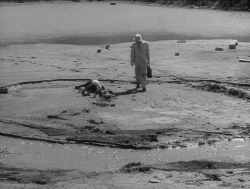Reviews
Oliver Stone
USA, 1974
Credits
Review by David Carter
Posted on 14 October 2011
Source Prism VHS
Categories 31 Days of Horror VIII
Much has been made about the number of actors and actresses who began their careers in the horror genre. Jamie Lee Curtis, Kevin Bacon, Johnny Depp, and dozens more used horror as their entrée to the world of more “serious” projects, and not all stars look back fondly on these roots. Less is made about the several directors who helmed horror films for their first forays behind the camera. These “frightening firsts” were rarely commercially or critically well received; ironic given the later successes the filmmakers would have. The films we’ll be looking at over the next four weeks are a varied lot. In a few instances, the director was simply a “hired gun;” others were wholly responsible for the finished films. Some filmmakers have downplayed their debuts, while others have embraced these early works. Invariably, these frightening firsts allow us to reassess these overlooked works in light of their subsequent oeuvre, and examine how, if at all, these films influenced the works for which they are best known.
Oliver Stone is one of the few Hollywood directors to which the often-used term “maverick” truly applies. Therefore it is only fitting that his path to becoming one of the most acclaimed and successful directors of the past forty years is unlike those of his contemporaries. While many of his compatriots were studying at the University of Southern California’s Cinema Arts program or cutting their teeth on Roger Corman’s B-movies, Stone interrupted his studies at Yale for a tour of combat duty in Vietnam. He began his cinematic career upon his return, teaming with Yale classmate and Troma Entertainment chief Lloyd Kaufman on the 1971 comedy The Battle of Love’s Return and the softcore thriller Sugar Cookies in 1973. The following year Stone would strike out on his own, writing and directing the horror film Seizure, one of the most uniquely bizarre American horror films of the seventies.
Jonathan Frid stars as Edmund Blackstone, a horror novelist described in the film as a “modern day Edgar Allan Poe.” Edmund has most recently been on the receiving end of the terror he usually inflicts on his readers, as he complains to his wife Nicole about a recurring nightmare that has left him with frazzled nerves. She has planned a weekend party to alleviate his stress, gathering several of their friends and business associates to their secluded lake house. Immediately the disparate personalities assembled clash, and Nicole’s plans for a pleasant distraction for Edmund are dashed.
Any hope for peace is shattered further by the arrival of three escaped mental patients: the Queen of Evil, the Spider, and the Jackal. The Queen of Evil makes the chilling proclamation to the group that only one of them will survive the night. To determine the survivor, they will engage in a series of challenges with the losers dying. The trio doesn’t confine themselves to the rules of their own game, however, and soon only Edmund, Nicole, and their son remain. The Queen of Evil poses Edmund with a difficult decision: she’ll guarantee his life if he’ll allow her to kill his wife and son. In making his choice, Edmund’s true nature is revealed as is his curious connection to the three murderers terrorizing his home.
Seizure feels like a hybrid of two distinct, disparate genres: the head film and a Hammer-esque thriller. While there is not even a mention of drugs in the film, Stone adds as many psychedelic touches as will fit, and every bizarre murder committed by the evil trio is rendered all the more odd by extensive use of the fish-eye lens. Strange perspectives and weirdly executed special effects give the impression that Stone was going for something more oneiric, but the film’s fractured logic and intentionally skewed chronology are more bad trip than bad dream.
These touches primarily occur after the arrival of the unwanted guests, and this style is juxtaposed against the more staid first half. As often seen in Hammer’s period pieces, Seizure brings together a varied cast of characters with little in common, and the film does little to flesh them out, effectively reducing them to a single trait. There’s a lothario artist, a greedy capitalist and his gold-digging mistress, a wise old philosopher and his vain wife, and a pair of aimless young adults. All but three of these are dead by the time the Queen of Evil reveals her sinister plot.
In his Horror Films of the 1970s, Volume I, John Kenneth Muir posits that it was Stone’s intent that these personages represent different aspects of Edmund’s psyche, a theory with which I disagree. Stone uses the characters to represent the different possible attitudes toward death one can have and, rather than they being related to him, Edmund is simply another facet of Stone’s exploration of this topic. The wealthy man tries to buy his way out of dying, the philosopher walks bravely towards his fate, and, revealing his true, narcissistic nature, Edmund decides that he is important than his wife and son and willingly sacrifices them to save himself. The film’s final twist shows Stone making the pessimistic proclamation that death is inevitable and a direct result of one’s character flaws.
Seizure is a minor footnote in Stone’s career which has been completely overshadowed by his later work and has yet to garner a DVD release. As often is the case with a filmmaker’s first work, however, there are echoes of Seizure throughout Stone’s oeuvre. His next film, The Hand, was a more traditional horror film that was more warmly received. One could make the argument that many of Stone’s films are, in a sense, “horror” films. His films Salvador and Platoon depict the horrors of war, Wall Street and Nixon explore the horrors of greed and power run amok, and his screenplays for Midnight Express and Scarface address the horrific aspects of the drug trade. Death figures prominently in many of his films, and the tall, bald specter that pursues Jim Morrison throughout The Doors is not far removed from Seizure’s evil trio. Lastly, some of Stone’s recurrent flaws are evident as well. The central plot point of Seizure whereby the true identities of the Queen, Spider, and Jackal are made known is done through an uninterrupted block of exposition to Edmund by his older mentor, robbing this information of any impact it may have had. This would later reappear in modified form in JFK, where Donald Sutherland’s “Mr. X” explains the entire conspiracy to assassinate Kennedy in less than five minutes.
Seizure is by no means perfect, but I’m of the opinion that it is overdue for reconsideration. Stone’s only misstep is being overly ambitious. It is evident while watching the film that he likely felt as if he was creating something that would transcend the horror genre, and, to his credit, the film is free from the clichés which typically hamper such films. Stone overreaches, but there is something admirable about his failing. I cannot readily find any other seventies horror film with which to compare it—ample cause to revive discussion of a film, be it successful or not.
More 31 Days of Horror VIII
-
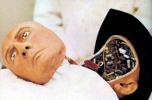
Westworld
1973 -

Child’s Play
1988 -
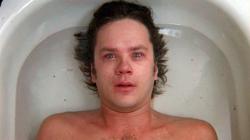
Jacob’s Ladder
1990 -

Willy Wonka and the Chocolate Factory
1971 -
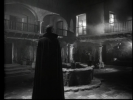
El Vampiro
1957 -
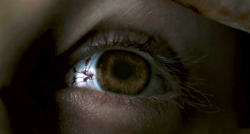
28 Weeks Later
2007 -

Piranha II: The Spawning
1981 -
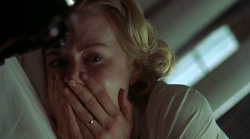
The Others
2001 -
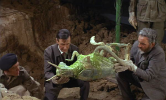
Quatermass and the Pit
1967 -

I Know Who Killed Me
2007 -
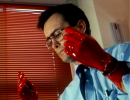
Bride of Re-Animator
1990 -

Alucarda
1978 -
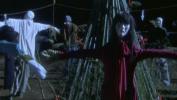
Kakashi
2001 -
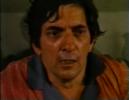
Seizure
1974 -
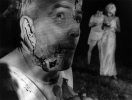
Night of the Living Dead
1968 -
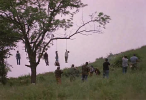
Night of the Living Dead
1990 -
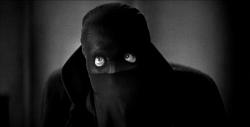
The Bat Whispers
1930 -

Miracle Mile
1988 -

Tintorera
1977 -

Paradise Lost
1996 -

The Cars that Ate Paris
1974 -

Ginger Snaps
2000 -
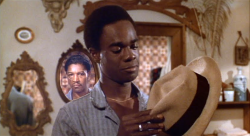
J.D.’s Revenge
1976 -
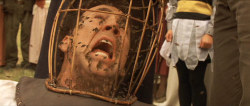
The Wicker Man
2006 -
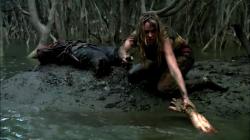
Black Water
2007 -

Don’t Panic
1988 -
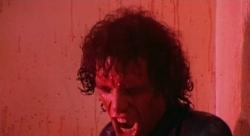
The Driller Killer
1979 -
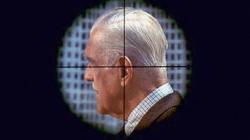
Targets
1968 -

Mahal
1949 -
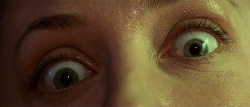
Event Horizon
1997
We don’t do comments anymore, but you may contact us here or find us on Twitter or Facebook.


